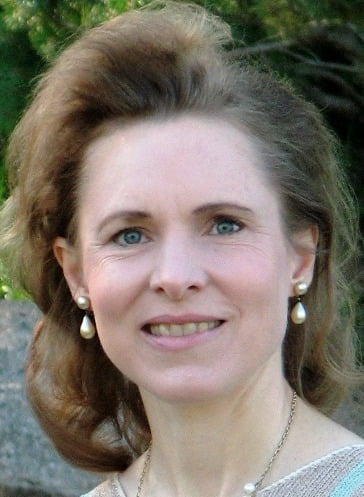In the 19th century Louis Pasteur observed that humans and animals that showed signs of being sick had very high levels of bacteria and viruses compared to those who were not sick. He then made the assumption that germs infect our body and cause sickness and disease. Pasteur, and German physician, Robert Koch, are considered the fathers of the germ theory. The practice of allopathic, conventional medicine to this day is still based on this theory.
The following is from Shifting the Paradigm: Insight into the Germ Theory by Jeanne Ohm, DC.
His contemporary, French chemist and biologist Antoine Bechamp, also believed that a healthy body would be immune to harmful bacteria, and only a weakened body could harbor harmful bacteria. His research contributed to this understanding when he discovered that there were living organisms in our bodies called microzymas, which essentially form into healthy cells in the healthy body and morph into unhealthy cells when the terrain is less than ideal. The conclusion:
Germs do not invade us, but rather are “grown” within us
when there is diseased tissue to live on.
Rudolf Virchow, another 19th-century scientist (dubbed the Father of Pathology), wrote, “If I could live my life over again, I would devote it to proving that germs seek their natural habitat—diseased tissue— rather than being the cause of diseased tissue; e.g. mosquitoes seek the stagnant water, but do not cause the pool to become stagnant.”
According to the Germ Theory of Disease all diseases are caused by microbial organisms. Renowned, Dr. Palmer, developer of the Chiropractic profession, in opposition to this, he declared,
“If the Germ Theory were Correct,
there would be No one living to Believe it!”
In this day and age, we have been taught that germs— bacteria and viruses—are bad, which ignores the vital functions they perform. They are designed to decompose dead and dying material. Germs are our planet’s recyclers; without them, life on earth couldn’t exist.
Out of the billions of bacteria and viruses we have in our bodies, most are considered “friendly germs.” Bacteria is essential for proper digestion and it scavenges dead cells in our body so they can be replaced by new healthy cells. When our body tissues become weak due to poor health management, normal bacteria and viruses start to multiply and scavenge our unhealthy, dying cells. Our immune system responds as a survival mechanism and we develop the symptoms of being “sick,” but the germs are just doing their job.
The question then becomes, what creates sickness and illness? Is it the germs or is it an unhealthy body? It has been said that on Pasteur’s deathbed, he admitted that Bernard was right and he, Pasteur, was wrong. Nonetheless, an era of antibiotic drugs, chemical pesticides and herbicides, vaccines and antibacterial soaps has ensued, resulting in a germphobic society and a pharmaceutical empire to lead the attack. But even worse, all of these weapons have interfered with the body’s natural microbiome and impaired our immunity.
Fast forward to June 2012, when the release of coordinated research from the Human Microbiome Project Consortium organized by the National Institutes of Health rocked the world. As The New York Times reported, “200 scientists at 80 institutions sequenced the genetic material of bacteria taken from 250 healthy people. They discovered more strains than they had ever imagined—as many as a thousand bacterial strains on each person. And each person’s collection of microbes was different from the next person’s. To the scientists’ surprise, they also found genetic signatures of disease causing bacteria lurking in everyone’s microbiome. But instead of making people ill, or even infectious, these disease-causing microbes simply live peacefully among their neighbors.”
Instead of the “one germ, one disease” theory that has dominated allopathic medicine for centuries, these findings imply that there is an entire ecosystem of bacteria symbiotically at work in the body, a concept understood by holistic practitioners for centuries. “This is a whole new way of looking at human biology and human disease,” says Dr. Phillip Tarr, a researcher and professor of pediatrics at the Washington University School of Medicine. “It’s awe-inspiring and it also offers incredible new opportunities.”
The following quote by Ronald J. Glasser, M.D., sums up the health crossroads we now face. This former assistant professor of pediatrics at the University of Minnesota writes, “It is the body that is the hero, not science, not antibiotics…not machines or new devices. The task of the physician today is what it has always been, to help the body do what it has learned so well to do on its own during its unending struggle for survival—to heal itself. It is the body, not medicine, that is the hero.” As more doctors realize the self-evident principles of supporting the terrain, perhaps the allopathic model of killing the “bad” germs to fight disease may finally shift to improving the terrain to support the friendly bacteria.
The body, like all of nature, exists by maintaining a state of balance. It is dependent upon an environment that nourishes and nurtures with interconnectivity and cooperation between whole systems, and an underlying recognition of intelligence and a respect for the natural processes and order.[1]
I hope you enjoyed this article. Next week, we will continue with the essentials for a healthy terrain which can be broken into several general premises: Nourishing the Terrain, Coordinating the Function and Trusting the Process.
We’re Here to Help YOU!
Amy Willis, MH
[1] https://www.chiroprax.com/blog/45759-shifting-the-paradigm-insight-into-the-germ-theory-trusting-the-process
About the Author

Amy Willis M.H.
